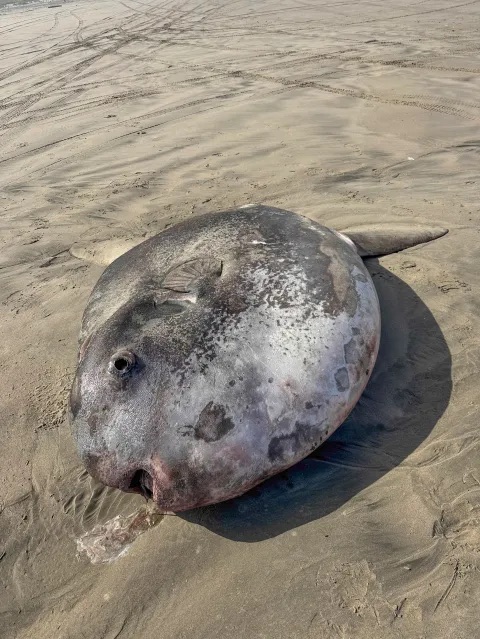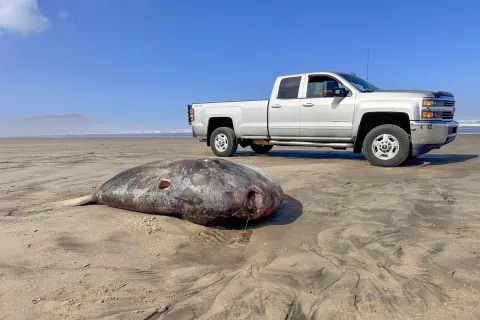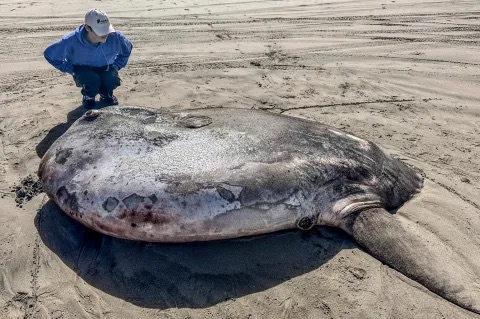A massive, disc-shaped fish was discovered on a beach in the southern hemisphere, an area where it was not thought to inhabit. The 7.3-foot hoodwinker sunfish was found on Gearhart Beach along Oregon’s northern shore on Monday, according to the Seaside Aquarium.
The aquarium reported on Facebook that the fish’s unusual appearance created a buzz on social media, drawing crowds to the beach despite the stormy weather.
The unusual gray fish has garnered worldwide attention, but it holds particular significance for Mariann Nyegaard, a researcher from New Zealand.

Mariann Nyegaard suspected the fish was not the typical ocean sunfish, Mola mola. She discovered and studied the hoodwinker sunfish, or Mola tecta, publishing her findings in 2017. “Mariann used photos to confirm it was a hoodwinker and possibly the largest one ever recorded,” the aquarium noted.
Previously believed to inhabit only temperate waters, hoodwinker sunfish have recently been found along coasts from California to Alaska, which have colder waters.
The aquarium suggested that this fish, likely present in the Pacific Northwest for some time, had been misidentified as the more common Mola mola.

Following Mariann Nyegaard’s advice, aquarium staff collected tissue samples, took measurements, and photographed the fish, confirming her identification. The hoodwinker sunfish is expected to remain on Gearhart Beach, just north of Seaside, for several more days or weeks.
The aquarium noted that the fish’s thick skin poses a challenge for scavengers to penetrate.
Describing the fish as extraordinary, they encouraged the public to visit and view it in person. This unique sighting comes shortly after another unusual aquatic creature was spotted in Missouri. In late May, a fisherman caught a northern snakehead, an invasive species known for its snake-like head and ability to breathe air.
